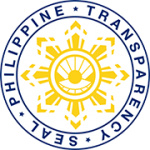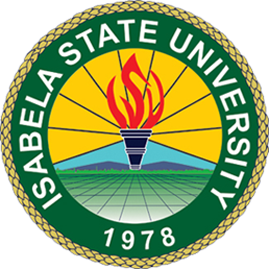JANET AMBATALI – FARMER-ADOPTOR ON RURAL ENTERPRISE DEVELOPMENT THROUGH INNOVATIVE GOAT PRODUCTION SYSTEMS
Mrs. Janet Ambatali has been raising goat since 2001. She started when she purchased two native does from her aunt. From there she was able to increase her stocks and now she presently has 21 heads not including all she has sold for 14 years.
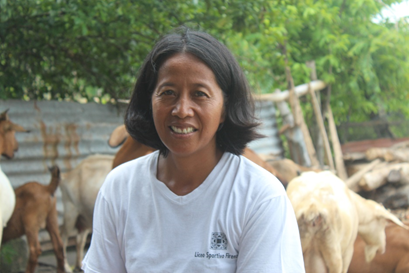
Mrs. Ambatali is under the project of Isabela State University’s extension program on goat technology delivery system “Rural Enterprise Development through Innovative Goat Production Systems”, a project under PCAARRD-DOST. Just like what other people thought, Mrs. Ambatali considered goat raising as an ordinary type of farm activity but her interest widened when she was encouraged to attend the training and seminars particularly the technology on artificial Insemination in ISU conducted by Dr. Jonathan N. Nayga the project Leader in coordination with the Extension Department of the ISU, Echague Campus. She was able to improve her skills through these seminars. From there she was able to adopt Artificial Insemination Technology and other technologies on housing, feeding and breeding. Artificial insemination helps her upgrade her stocks from native to upgraded crossbreeds. These seminars served as her foundation in improving her production practices.
Mrs. Ambatali is just one of the many successful raisers under the RED project. But she doesn’t limit this success just to herself. She helps other small raisers in their neighbors by sharing her male hybrid stock to breed on their female goats.
From January to August this year, she has sold 24 heads, with a price of three thousand five hundred Pesos each. That is already amounting to more than seventy thousand. Goat raising is a big help for her family. This has served as additional income source for their needs. Through goat raising she was able to send her kids to school and finance other expenses.
It cannot be denied that Mrs. Ambatali benefited from the project. This is a proof that the project is successful in attaining their objectives. In addition, the following testimony was narrated by Mrs. Ambatali. “ Ang pag-aalaga ko ng kambing gamit ang technolohiya na “ Artificial Insemination or AI” ay malaking tulong sa pagpapaganda at pag-upgrade ng aking mga alagang kambing. Binebenta ko ang aking 3 months-old na upgraded goat sa halagang 3,500.00 to 4,000.00 pesos bawat isa. More or Less 70,000.00 ang aking kita bawat bentahan. Mas malaki ang kita ko sa pag-aalaga ng kambing kumpara sa pagtatanim ng mais. Dahil sa kita ko sa kambing napaaral namin ang aming mga anak sa private school sa Santiago City sa kanilang High School education. Ang sobrang naiipon namin sa kita ng kambing ay ginagamit namin sa pag-paayos ng bahay. Maganda ang pag-alaga ng kambing, gamit ang “AI” technology. Maraming salamat sa Isabela State University, sa project ng extension program on goat technology delivery system”.
ROGELIO ESPIRITU – MAGSASAKA SIYENTISTA OF FARMERS INFORMATION AND TECHNOLOGY SERVICES (FITS) ECHAGUE
Harnessing the Opportunities of the Land
Rogelio Espiritu, 41 years old, comes from a landed family in Tuguegarao, Echague, Isabela. A graduate of Agricultural Engineering from the nearby Isabela State University, he pursued an earlier career as a field technician in a tobacco company in the early 90’s. Three years after, Rogelio Espiritu resigned from his job to prepare for the board exam for Agricultural Engineering, but he was not able to take the exam for personal reasons. Since he did not take the exam, he decided to establish a techno demo of tobacco in his farm. Soon after his demo farm, he got three contract jobs at a government agency for three months before he transferred again to other private multinational agricultural company. He stayed there for three years. Then again, he realized he was not happy being a mere employee. Finally, in 2014, he realized his real calling – farming.
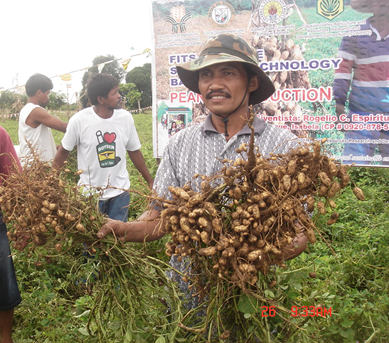
History of Involvement in Techno Gabay
His direct involvement in the Techno Gabay Program a technology transfer program of ISU-CVARRD-PCAARRD Project is not that long yet. His experimental and academic backgrounds in agriculture, not to mention his active participation in various seminars conducted by the Department of Agriculture made him stand out from the other farmers. He was then appointed as Magsasaka Siyentista for the Farmers Information and Technology Services (FITS) of his hometown, Echague, dubbed Queen Town of the Cagayan Valley. In general, he serves as a model to other farmers. Apart of his role as a mentor of some sort, he also appreciates the fact that he gets invited to participate in training that hones his knowledge and skills in agriculture and other areas such as Information and Communication Technology (ICT).
Enterprise/Farm Description
Currently, Rogelio owns a hectare of peanut farm adjacent to his house. Some 1.8 hectares are also planted to corn and cash crops like ampalaya, squash, pole sitao and baguio beans, which serve as his alternative commodities. What is admirable about this young farmer is his initiative and resourcefulness in generating considerable income from a not-so-ideal farm, in the shortest possible time. This is considering that Echague soil is generally not ideal for cultivation of a variety of crops other than corn and peanut. Before he ventured into a more or less substantial production of peanut, he planted yellow corn from which he derived his early income, including vegetable crops.
Technologies and innovations applied
Rogelio is truly receptive of technologies and is innovative. He has been practicing the adopted technologies in peanut production since he started his way to farming. He believes that certain package of technologies are recommended because these have been proven effective. Based on his experience in peanut production, he claims that his yield had increased after using technologies from DA. These technologies, scientific they might count to common farmers sometimes, are actually more practical to use, lessening time and labor in farming. What he lacks however, he admits, are mechanized facilities that could further increase his production. Nonetheless, he still gets considerably higher production as compared to neighboring farms. He keeps on searching for innovation that could further increase his production.
With his modest facilities, he follows recommended technologies as much as he could. IN land preparation, he makes use of mechanized preparation. Prior to planting he selects seeds with high quality, those with high yielding performance. Recently, he planted Asha and Namnama at 4 bags of Asha and 2 bags Namnama per hectare. He uses organic fertilizer 16-20-0 an 14-14-14 in basal application before planting. To avoid yellowing of leaves, he sprays Agrowell which serves as supplementary food for the plant, sprayed it 35 to 40 days after planting. He said that he had been using this fertilizer because it increased his yield. During the flowering stage, the amount he sprays depends on the nitrogen, phosphorous, and potassium (NPK) content he applies which is seen vital in the formation of pods.
As to planting system, he uses a rate of 25 cm between plants, 30 to 35 cm in between rows and one to two seeds per hill. In his early attempts to plant peanut, he made use of the traditional practice which is 15 cm space in between plants, 30 to 35 cm in between rows and two seeds per hill. He observed that this traditional practice gave low yield because of the planting rate which caused crowded in the plants as they grow. His cultural management practices include weeding, cultivation and pest management. In weeding, he utilized pre-emergence weed control, which he usually sprays three days before planting. Within 25-30 days after planting, he sprays post emergence weed control. To protect the leaves of peanut from insects, he applies Carata TM or Symbus Insecticide TM. If these are not enough, he does hilling-up of plants as an alternative. And to further keep his crop productive, he maintains cleanliness of his farm and does regular watering, especially during the summer months.
He waits for the precise maturity stage of his peanut for harvesting. At the peak period of harvesting, opts for manual-rooting and plowing in spaces between peanut to make the soil porous, hence make it easier to uproot. Rogelio unshells peanuts in the traditional way. He waits 4-5 days to dry the peanuts before shelling.
Initial Results of Technology Applied
He considers peanut as a good money maker. He once planted 100 kilos of Asha and Namnama varieties which he harvested after 4 months. Average cost of producing peanuts (i.e., buying seeds to threshing of harvest) is Php15,700. During peak harvest months, he gets 2-2.5 tons per hectare or 2,304 kilos. From this yield, he gets gross income of Php53,000.
Activities as Consultant
Rogelio declares being a Magsasaka Siyentista is not easy because it requires a big responsibility to an ordinary farmer like him, but he was challenged to do the task and take it as his edge to other farmers. Even before he was appointed as an MS, farmers in their barangay thrust his capability on farming. To date, several farmers are consulting him and are seeking for his advice in fertilizer application, planting system, weed control and even in marketing their products. The number of people consulting him speaks well of how accommodating this farmer leader is, and how farmers thrust his ability.
Most Significant Changes
The pleasure of being a Magsasaka Siyentista is that he meets many people from all levels, through trainings and seminars. All this opportunities and his individual experiences and discoveries in his farming system broaden his knowledge in agriculture, considering the opportunities for continuous learning. The biggest changes in his life after being appointed as an MS is that he is beginning to feel that which he has been seeking even when he was hopping from one job to another in the past.-fulfillment in is chosen vocation. He knows however that the best is yet to come, and he is very much looking forward to becoming a more successful Magsasaka Siyentista.
From Office to Farm Field: The Story of MS Alfredo Alog
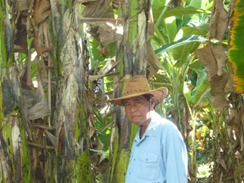 The story of MS Alfredo Alog is a story of a dream came true. “I always dreamed to have my own farm and work on it everyday”.Fred, as many call him, had agriculture as a career choice. After graduating in 1958 from the University of the Philippines at Los Banos with a Bachelor’s degree in Agriculture, he entered Bureau of Agricultural Extension in 1959 and later the Department of Agrarian Reform (DAR) in 1978. He started from Key staff to Team Leader position and with his proven potential as an agriculturist he became the DAR Provincial Officer in the same year.
The story of MS Alfredo Alog is a story of a dream came true. “I always dreamed to have my own farm and work on it everyday”.Fred, as many call him, had agriculture as a career choice. After graduating in 1958 from the University of the Philippines at Los Banos with a Bachelor’s degree in Agriculture, he entered Bureau of Agricultural Extension in 1959 and later the Department of Agrarian Reform (DAR) in 1978. He started from Key staff to Team Leader position and with his proven potential as an agriculturist he became the DAR Provincial Officer in the same year.
According to him, farming is a main part of his life. Even before he became a development worker and public servant for agrarian reform beneficiaries’ organizations (ARBOs) in Isabela, he started to establish his farm at Brgy. Nakar in Angadanan, Isabela. It was a 20-hectare allocated to various commodities such as banana, small ruminants, vegetables and pineapple. It was in November 2002 that he joined the Farmers’ Scientist Bureau (FSB) – the Magsasaka Siyentista (MS) arm of the Techno Gabay Program (TGP) as the MS for FITS LGU Angadanan after his retirement from government service.
From among the commodities he planted in his farm, it is banana that he loves the most. He allocated three (3) hectares for Saba banana production. At his age of 68, MS Alog still assimilates and improves his banana production farming practices. With this he became the proponent of the Science and Technology – Based Farm (STBF) on Saba Banana Production which implemented Package of Technology Options in improving farming practices to increase yield and income of banana farmers. The technologies he promoted include distance of planting, use/application of fertilizer, de-suckering as part of mat sanitation, drip irrigation and construction of drainage canal, deleafing as part of the sanitary practices and debudding & fruit obstacle removal.

MS Alog had his share of misery brought by natural calamities battering the valley. Crops such as banana suffer the most during strong winds from typhoons. According to him, he experienced harvesting nothing from his banana plantation because of Typhoon Pedring and Quiel which battered Isabela in 2011. The incident did not made him stop from farming, and made him persevere more in finding ways to adapt to the challenges of his farm. “ I am looking at farming with much optimism, I consider the problems I encountered as challenges, puzzles which needs to be solved which made me love farming the more” according to him.
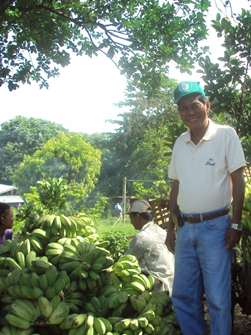
MS Alog smiles as he now sells his
harvest from the banana project.
From his experiences as a farmer, he underlined the importance of perseverance, dedication to learning and open mindedness. According to MS Alog, he continued to read agricultural magazines and continuously updated his farming practices to keep abreast with the updates and new technologies in agricultural production. “Complacence should not be the attitude of a farmer, he needs to continue to make his self informed and learn new practices as well as adapt and make do with problems because farming activity is a challenging career; you need to be innovative” said MS Alog. He believes that farming is a gamble- a risk taking activity which needs perseverance, dedication and open mindedness. According to him he is now employed full time in another career which is in farming – making him shift from office to farm field. He said that he would not exchange his farming life with other things. Mr. Alog quoted himself saying “Thanks to the Isabela State University through Dr. Biley Temanel, Technical Expert on Banana and the Extension staff of ISU Echague Campus for the various trainings and technology clinics conducted by their group”.

